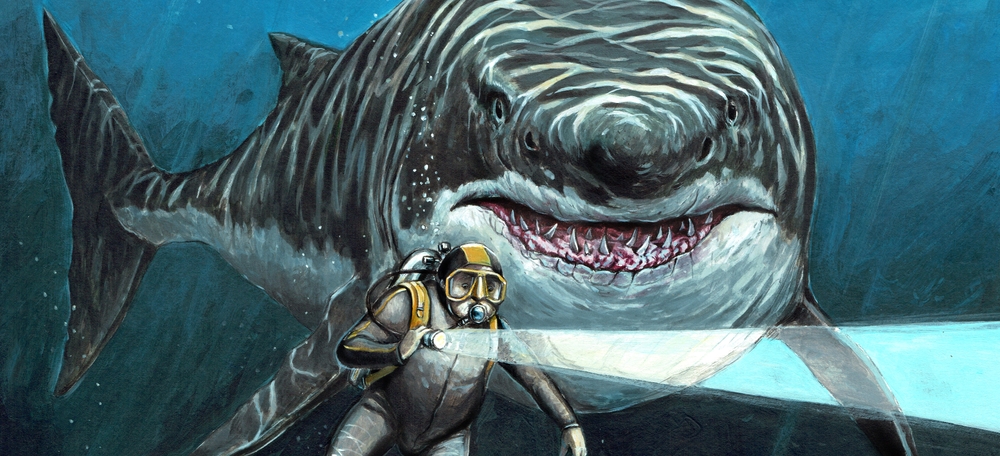By Courtney Cooper
The Truth About Megalodon
Some of you may have heard of the Megalodon, either in reference to the movies, The Meg (the one where Jason Statham battles the giant Megalodon), or from the news when new fossils are discovered. Each time a new fossil is discovered the opportunity arises for us to learning more about these prehistoric creatures. This blog explores the Megalodon and everything we know about this fearsome shark. We also discuss further shark facts that you might be interested in! Apex Shark Expeditions provides the best shark cage diving in Cape Town.
We Dive into the mysteries of Megalodon
Sharks are ancient creatures, in fact they were alive 200 million years before dinosaurs! Scientists have found hundreds of fossils (mostly teeth) of the Megalodon and they are believed to have lived in the early Miocene Epoch (which began 23.03 million years ago) to the end of the Pliocene Epoch (2.58 million years ago). The word megalodon, comes from Ancient Greek, meaning, “big tooth”.
Fossils from the Megalodon can be found on almost every continent, besides Antarctica. They lived in mainly tropical and subtropical waters. We know this from where their fossils were discovered. These fossils include, hundreds of teeth, two vertebral columns, and a small amount of individual vertebrae. The majority of the shark’s skeleton was made of soft cartilage, similar to our ears and nose. The teeth of the Megalodon were the hardest part of their body and were covered in mineral calcium phosphate. This is the reason why so many of their teeth have been discovered well preserved.
So how did the Megalodon look? Initially it was thought that the Megalodon resembled a enormous Great White Shark, however this theory has now been proven wrong. This is because scientists thought the Great White was related to the Megalodon due to their teeth being so similar in shape. It is now known that the Megalodon had a much shorter snout, with a flatter, squashed-like jaw in comparison.
Mature adults Megalodons reached a length of 10.2 metres, with the largest specimens measuring 17.9 metres long. Studies estimate that adult body mass of these sharks ranged from 30 metric tons to more than 65 metric tons, Adult females are larger in both length and mass than adult males. The below figure shows you the average size and size comparison to the Great White Shark.

Otodus obliquus is the oldest known ancestor of megalodon. Otodus, is a 55-million-year-old shark which grew to around 10 metres in length. Evolutionary history suggests that the lineage goes all the way back to Cretalamna appendiculata, dating to 105 million years old. The Megalodon is thought to be the last member.
Wondering what such an enormous and ferocious shark ate? From fossil bones of whales and sharks (where the Megalodon’s teeth were found still rooted in), we know that their diet consisted of Baleen Whales, Toothed Whales, Seals, and other large sharks, such as the Hammerhead.
So how did the Megalodon become extinct? By the end of the Pliocene (2.6 million years ago), the planet began a phase of global cooling. During this phase, 43% of turtles and 35% of sea birds became extinct due to the cooling temperatures, which depleted the base of the food chain. The sharks relied on tropical waters and as waters cooled, they too lost their habitats.
Once the biggest fish in the ocean, at the top of the food chain, is now extinct. Some believe that the Great White Shark lived and hunted amongst the Megalodon. Isn’t it fascinating that this shark struggled to adapt and survive, while the Great White Shark thrives all these millions of years later?
If you enjoyed this article, you may also be interested in our other article, where we discuss how sharks see. Make your new year exciting. Book your Shark cage diving in Gansbaai.




